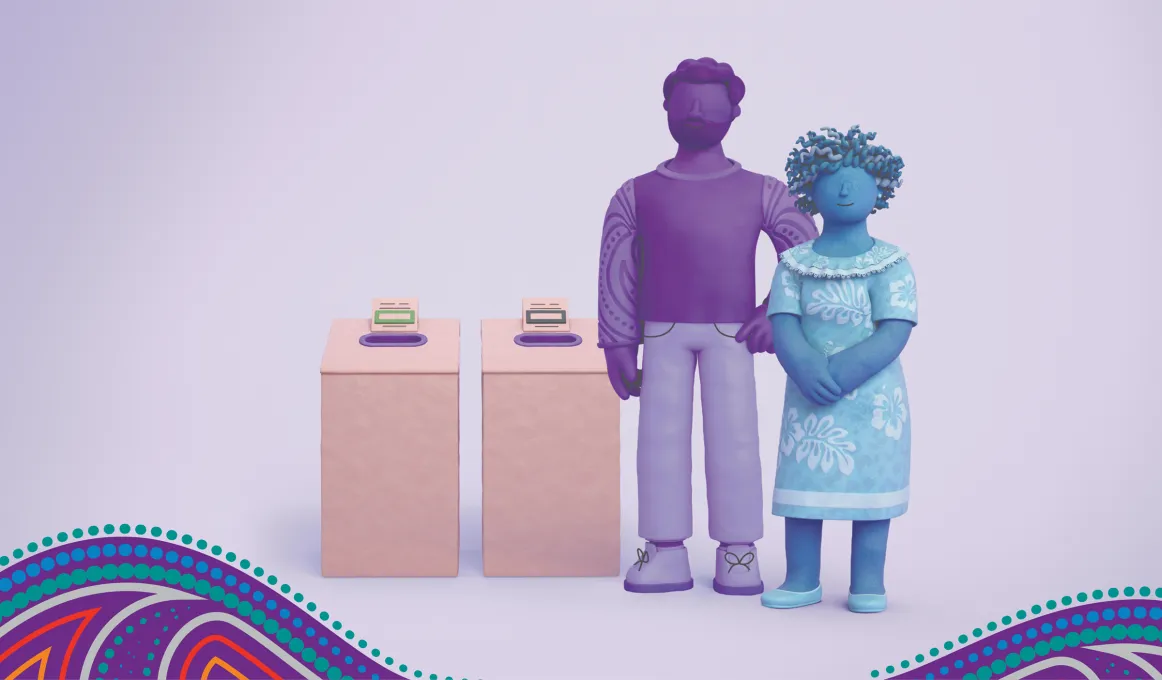Voting in the federal election

The federal election is on Saturday 3 May. If you need a refresher on the voting process, or it’s your first time, here’s some info on what to do.
Image artwork by Marcus Lee Design.
Authorised by the Electoral Commissioner, Canberra.
Filling out voting papers
When you come to vote, you’ll be asked three questions:
- “What’s your full name?” – This means your first and last name.
- “Where do you live?” – This means the address you gave when you enrolled to vote.
- “Have you voted before in this Federal Election?” – This is to make sure people only vote once.
You’ll get two voting forms to fill out, known as ballot papers.
The first form is a small green one for the House of Representatives. This is how you vote for someone to represent your local area, also called an electorate. Number every box in the order of your choice.
The second form is a large white one for the Senate. This is how you vote for someone to represent your state or territory. You can choose to vote either:
- above the line, by numbering at least six boxes in the order of your choice, or
- below the line, by numbering at least 12 boxes in the order of your choice.
Don’t worry if you make a mistake. Ask for another voting paper and start again.
Your vote is your choice. It’s also secret – no one will know how you voted unless you choose to tell them, and the AEC keeps all votes safe and secure.
Watch out for false or misleading information
During an election, you’ll hear a lot of things about the voting process. Some of this info may not be true or could be misleading.
This can happen through words, pictures, videos or sounds from a computer that try to tell people when or where to vote, how to fill out their voting papers, or even if they can trust the voting system.
It can happen to anyone, because it’s easier than ever to create and spread false or misleading information.
It’s up to all of us to look after our voting system by checking the information we get. Here’s how:
- Check the content. Does it cause strong feelings, give you limited choices, blame or attack a particular group or person?
- Check the source. Ask yourself where the info came from. Who made it? How and when was it made? And why?
- Check the AEC website. This is the official place for true and correct info about the voting process. Head to aec.gov.au to find out when and where to vote, how votes are counted, how a result is decided and how the AEC keeps votes safe.
It can be as easy as ignoring false or misleading info. Don’t share it, even as a joke or if you know it’s not true. If you want to, you can also report it to the place where you saw it.
Stop and think about the content and source of what you see, hear and read about the voting process...then check, ignore or report it. Support friends and family to do the same.
Get more tips and follow the AEC’s social media accounts to hear directly from the experts.